does one usually put aggregating associations between interfaces?
Example:

Here, I feel that one aggregation is redundant. The one between the interfaces is more important, because that's what the clients of the classes will be using. BMW and LuxuryWheel will always be used through ICar and IWheel. However, ICar does not really aggregate IWheel, as it is an interface and contains no actual logic. BMW does clearly aggregate LuxuryWheel but that is almost an implementation detail.
How would you model this? Is there a way in UML to mark an aggregation (or association) as abstract, or to-be-implemented?